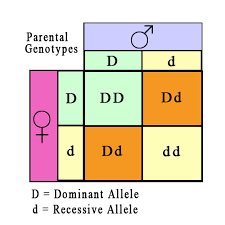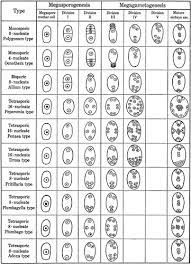POLLINATION - ANTHER DEHISCENCE
POLLINATION
Pollination is commonly defined as the process of pollen transfer from anther to stigma of a flower. pollen grains are formed in the pollen sac which are completely enclosed by multi-layered anther wall. Therefore, the first obvious requisite for pollination is the opening of anther sacs to release the pollen grains (anther dehiscence).
ANTHER
DEHISCENCE:
Anther dehiscence
to release the pollen grains is critical for the male fertility of plants. Anthers
with viable pollen that do not dehisce timely are functionally as good as male
sterile plants that do not produce viable pollen. Anther dehiscence is a
multistage process involving localized differentiation and degeneration,
combination with changes in structure and water status of the anther to
facilitate complete opening of anther to release pollen.
Anther dehiscence
involves three types of specialized cells:
- Stomium
- Septum
- Endothecium
STOMIUM:
The stomium
differentiates before the microspore mother cells enter meiosis. It comprises
of small specialized epidermal cells and, at anther maturation, splits to
facilitate anther dehiscence. The distribution of thickening in endothecium around
the stomium determines the form of stomium opening.
SEPTUM:
The septum
that separates the two lobes of anther, breaks down at a later stage and the
two sporangia of an anther lobe become joined to forms a single locule.
ENDOTHECIUM:
The endothecium
is the hypodermal layer of the anther wall, which after the release of
microspores from the tetrads undergoes expansion and deposition of ligno-cellulosic
secondary thickening that arise from the inner tangential walls and run outward
and upward ending near the outer wall of each cell. The outer tangential wall remains
thin. The thickening may be annular-rib type, reticulate-rib type or palmate-rib
type depending on the species. In the anther which open by longitudinal slits
the endothecial cells around the junction of the two sporangia lack these
thickenings. Endothecium secondary thickening is essential for providing
mechanical force for anther dehiscence.
After the release
of microspores from the tetrads, tangential swelling of the epidermis and
endothecium increases the circumference of the anther locule wall. However, due
to thickening, inner wall of the endothecium does not expand. The unequal
expansion of the inner and outer wall of the endothecium causes tension to
develop and inward bending of the locule, resulting in the disruption of the
stomium cells. In the final stage of anther development ,dehydration of the
anther walls causes the locules to bend outwards. The septum separating the two
locules is enzymatically lysed and undergoes programmed cell death (PCD). Around
the pollen maturation stage the PCD starts from the tapetum and extends to the
outer tissues of the anther including the middle layers and stomium. At this
point dehydration of epidermis and endothecium causes shrinkage of the
tangential outer wall, which is limited by secondary thickening, resulting in
an increased tension on the stomium region. As the pressure increases, the
stomium splits and the anther walls retract. In rice the force created by
anther desiccation is not sufficient for stomium and septum rupture. Swelling of
the pollen generates additional force for septum breakdown.
Jasmonic acid (JA)seems to be a critical signal for anther dehiscence. Other hormones, particularly auxin, are also involved in this process.
KEY
DEVELOPMENTAL EVENTS IN ANTHER DEHISCENCE ARE:
Microspore release:
- Accumulation of auxin in the anther
- Endothecium expansion
- Secondary thickening formation in endothecium.
Tapetal breakdown and stomium split:
- Enzymatic lysis of septum
- PCD in stomium region
- JA role in stomium degeneration
- Swelling of endothecial cells and pollen
- Expression of acquaporins
- Localized changes in sucrose transporters, K+ ions
- Dehydration of anther walls.
Filament extension / anther and flower opening:
- Localized changes in sucrose transporters
- Dehydration of anther walls – active transport and evaporation
- Filament extension – JA biosynthesis in the filament
- Auxin transport in the filament – role in elongation
- GA role in the filament elongation.
REFERENCE :
THE
EMBROLOGY OF ANGISPERMS 6th EDITION Author; SS BHOJWANI, SP
BHATNAGAR ,PK DANTU.






Comments